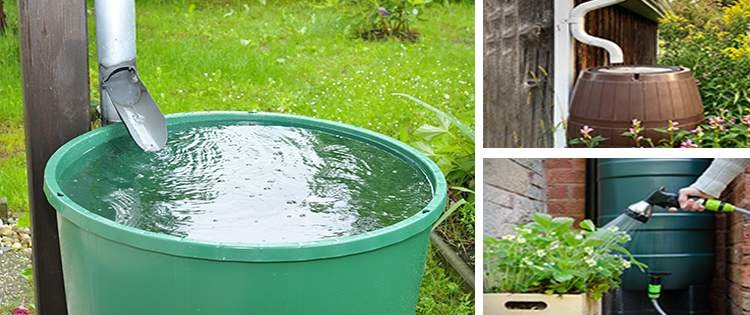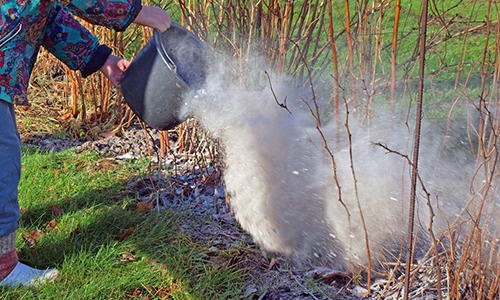Green onions, often known as spring onions, scallions, or salad onions, are a versatile and tasty complement to many recipes. These tasty onions grow fast and readily in a home garden or even a tiny indoor environment.
In this guide we’ll walk you through the entire process of producing green onions, from selecting the correct kind to planting and caring for your onions to harvesting and using them in your favorite dishes. Whether you’re an experienced gardener or a novice, you’ll learn everything you need to know to grow your own fresh, tasty green onions at home.
A Brief History
Green (spring) onions, also known as scallions or bunching onions, are an ancient variety of onion that has been cultivated since at least the time of the Egyptians. It is believed that they were first grown in the gardens of Babylon, where they were harvested for their onion bulbs and stems.
In China, green onions have been used as a culinary ingredient since at least the 12th century. They are a key ingredient in the Chinese dish “stir-fried spring onions”, which is still popular today.
In Europe, green onions have been eaten since the Middle Ages, where they were grown and harvested by farmers. They were often used in recipes to add flavor to soups and stews.
In North America, green onions were first cultivated by Native Americans who grew them for medicinal purposes. The settlers who arrived in the 17th century brought with them European recipes which called for green onion as an ingredient, and so began the long history of green onion cultivation in North America.
Today, green onions are a popular ingredient in many cuisines around the world. They are used to add flavor to salads, soups, stir-fries, and other dishes. Green onions are also widely used in Mexican cuisine, where they are known as cebollitas or cebollas. They can be eaten raw or cooked and can be used fresh or frozen.
Nutritional Benefits
Green onions, also known as scallions or spring onions, are a healthy vegetable that can be easily grown in the garden. Not only are they a tasty addition to many dishes, but they are also incredibly nutritious. One cup of cut scallions contains 10% of the daily recommended amount of dietary fiber, as well as vitamin A, vitamin C, vitamin B2 or thiamine, and sulfur compounds such as allyl sulfide.
Vitamin A is essential for maintaining normal vision, while vitamin C helps to maintain a healthy immune system and reduce inflammation. Vitamin B2 is involved in energy production and helps to metabolize proteins and fats. The sulfur compounds found in scallions can help to reduce inflammation and improve blood circulation.
Carotenoids such as lutein and zeaxanthin are also found in green onions. These powerful antioxidants help to protect cells from damage caused by free radicals in the environment. They are thought to play a role in reducing the risk of certain cancers and can help to slow down the aging process by protecting skin cells from UV radiation damage.
In addition to their nutritional benefits, green onions can also provide flavor and color to dishes. They can be used in salads, soups, omelets, stir-fries, and more. They are easy to grow in the garden and require little maintenance once they have been planted.
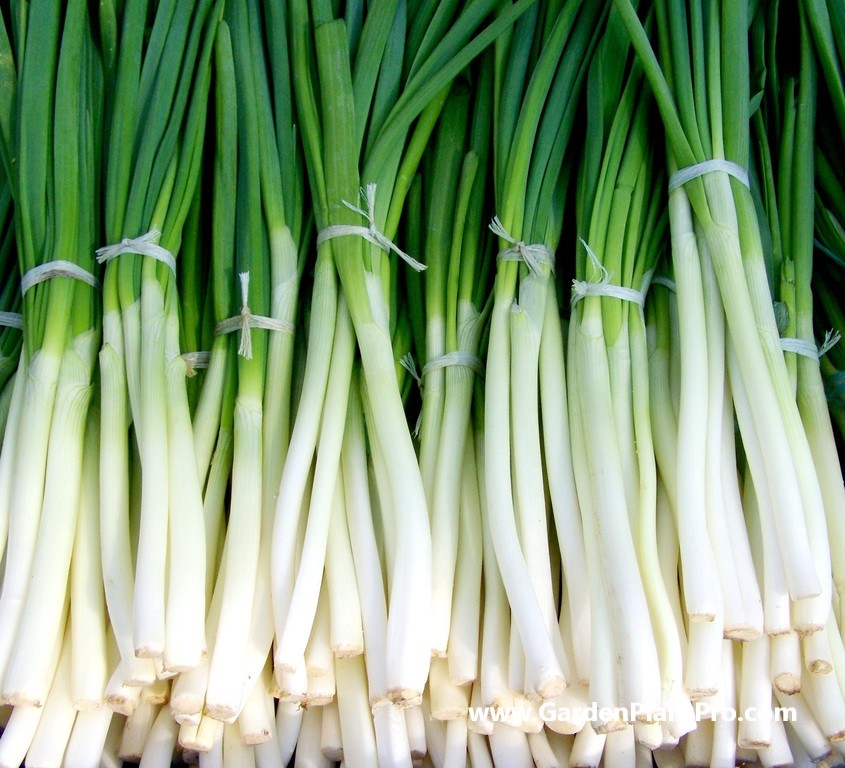
Common Varieties & Their Uses
There are many different varieties of green onions to choose from, each with its own unique flavor and uses. The most common varieties are the scallion, also known as the green onion or spring onion, and the Welsh onion.
Scallions are a type of onion with a milder flavor than other varieties. They are usually harvested before the bulb has fully formed, and have a deep green color and crisp texture. Scallions can be eaten raw or cooked, and are commonly used in salads, soups, stir-fries, and other dishes.
The Welsh onion is a hardy variety that is often mistaken for a leek due to its long stems. It has a more pungent flavor than scallions and is best cooked. Welsh onions can be used in place of regular onions in most recipes, as well as added to soups, stews, casseroles, and other dishes.
No matter which variety you choose, growing your own green onions is easy! With the right care and attention, you can have an abundant harvest of fresh green onions all season long.
When To Sow
When it comes to sowing spring onions, timing is key. Depending on where you live, the best time to sow your seeds or seedlings will vary. However, in general, you should aim to sow your spring onions in late winter or early spring, when the soil has warmed up slightly and the days are starting to get longer.
In warmer climates, you can sow in early spring and enjoy a continuous crop from then until autumn. In cooler areas, you may need to wait until mid-spring to ensure that the soil is warm enough for the seedlings to thrive. To ensure a longer harvest period, try sowing a few batches of spring onions every couple of weeks from mid-spring until late summer.
Choosing A Suitable Location In The Garden
Choosing an appropriate location for your green onion plants is essential for successful growth. When selecting a location, look for a spot that receives at least 6 hours of full sun per day. Avoid areas that are prone to waterlogging or have poor drainage.
Once you have chosen a suitable location, remove any rocks or lumps from the soil and rake it to create a smooth surface. You may also want to consider adding a good fertiliser well in advance of planting, as green onions prefer rich, well-drained soil.
When deciding on the size of your green onion bed, remember that these plants can be grown in rows or as a single patch. The distance between each row should be at least 20 cm and the distance between each plant should be 15 cm.
DIY PROJECT: Collect rainwater no matter where you live...
This DIY project is the best way to legally collect rainwater NO MATTER where you live. Get chlorine-free water, cut down on your water bills, and have enough for an emergency situation or to water your garden. Read More Here...
Finally, if you are planting your green onions in pots, choose a container with good drainage holes and fill it with good potting compost. This will provide the optimal growing conditions for your green onions and ensure they get enough water and nutrients to thrive.
Preparing The Soil
Preparing the soil is an important step when growing green (spring) onions.
To ensure they get the best start, you should ensure your soil is loose and friable, slightly acidic (pH 5-6), and well-drained. Adding compost or worm castings from your worm farm to the soil can help provide essential nutrients and improve drainage. For best results, you should also make sure the soil has plenty of humus-rich material such as compost or aged manure.
Once the soil is prepared, it’s time to sow your seeds or seedlings. To ensure a continual harvest of spring onions in summer, sow every two weeks in small batches. For a quicker crop, start with seedlings which can be planted directly into the ground.
Planting The Seeds Or Seedlings
Planting the seeds or seedlings of green onions is the next step in cultivating a successful crop.
For direct sowing, seeds should be planted in well-draining soil amended with plenty of organic matter. The best time to sow is in the early spring, once the soil has begun to warm up and the last frost has passed.
To sow, create shallow furrows in the soil and place a few seeds in each furrow, spaced about 1/4 inch apart. Then, lightly cover the seeds with soil and water with a light shower to avoid dislodging them. If raising seeds in trays, transplant them into garden beds once they have developed their first set of true leaves.
When planting seedlings, it is important to maintain good root contact with the soil. Water plants thoroughly before planting and allow to drain, then place each seedling into its own hole ensuring that the roots are not tangled or compacted. Cover the roots with potting mix to about 6 mm deep and firm gently around them. After planting, water immediately with a light shower and keep moist for a few weeks until the plants become established.
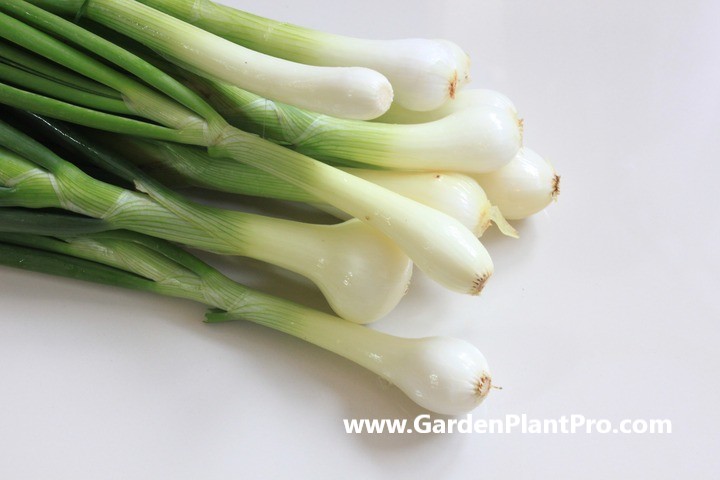
Caring For The Seedlings
Caring for the seedlings is an important part of the process of growing green onions. During the first few weeks, the seedlings need to be monitored closely to ensure they are getting enough water and nutrients. It is best to water in the morning so that the leaves have time to dry off before nightfall. Watering should be done slowly and deeply, so that all of the soil is moistened evenly.
Fertilizing should be done every two weeks with a balanced fertilizer. The fertilizer should be diluted, as too much can burn the roots of the seedlings and stunt their growth. Be sure to check the label for application instructions and never apply more than what is recommended on the package.
Additionally, thinning will need to be done when the seedlings are around 4-inches tall. This ensures that there is enough space between plants for them to grow properly. To thin, simply remove plants that are too close together with your hands or scissors and discard them.
Finally, weeding should be done regularly to keep weeds from competing with the onions for resources in the soil. Hand weeding is best, as this allows you to avoid damaging shallow roots of nearby plants.
It is important to monitor your plants for signs of stress or disease that could be caused by over-fertilizing or overwatering. If you notice any of these signs, adjust your watering and fertilizing schedule accordingly. With regular care and attention, you will be able to enjoy a bounty of delicious spring onions all season long.
When & How To Harvest
Harvesting green (spring) onions is relatively easy and should be done around eight weeks after sowing. To ensure the best quality, start by identifying the largest, outer leaves and then use a pair of scissors to give them a “haircut” by snipping off the tops. Once this is done, carefully fork the soil around the plants before pulling up the spring onions.
When harvesting, be sure to leave some of the roots in the ground so they will regrow and you can enjoy multiple harvests throughout the season. It is also important to harvest them when they are still young, as this will ensure they are at their peak flavor and texture.
For best results, harvest on cloudy days or in the early mornings when temperatures are cooler. Place harvested spring onions in a shallow basket or tray and keep them out of direct sunlight to prevent wilting.
Once harvested, you can store your green onions in a cool, dark place for up to two weeks or refrigerate them for up to four weeks. To preserve them for longer periods of time you can blanch then freeze them or pickle them in vinegar or brine.
Do you have some charcoal in your house right now? We call charcoal a “miracle leftover” for anyone who wants to be a little more self-sufficient and cut costs. That’s because it can help you with so many different things around the house and garden. You can even use it to make an energy-free fridge. Read More Here...
Remember to practice crop rotation when planting your spring onions as this helps prevent disease and pests from attacking your plants. In addition, planting a variety of companion plants near your spring onions can help attract beneficial insects that can help keep pests away from your crop.
Storing Green Onions
The key to preserving green onions is to keep them cool, dry, and away from direct sunlight.
The best way to store green onions is in a plastic bag with the tops cut off, or in a jar with a few inches of water. Place each bundle of green onions in a plastic bag, label with the date, and seal the bag. Place the bag in the crisper drawer of your refrigerator for up to two weeks.
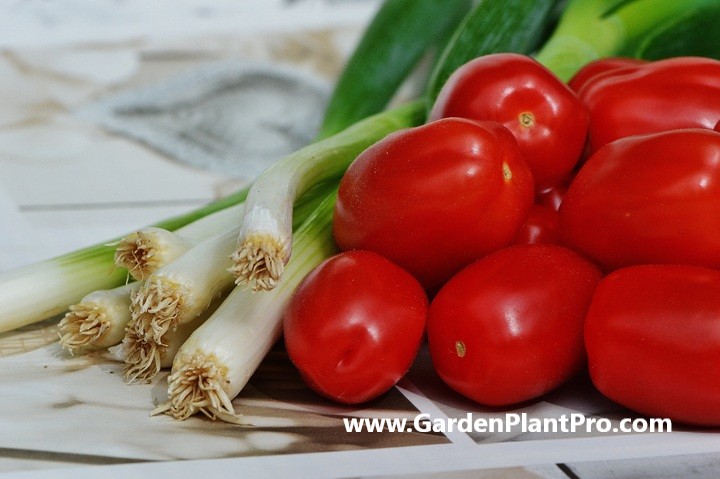
Common Diseases & How To Control Them
Common diseases of green onions can include onion white rot, downy mildew, and bacterial blight.
Onion white rot is a soil-borne fungus that causes leaves to yellow and wilt, and bulbs to rot. Downy mildew causes yellow lesions on the leaves and can cause the plant to become stunted or fail to produce bulbs. Bacterial blight is caused by a bacterium called Pseudomonas syringae and can cause black lesions on the leaves.
Fortunately, there are several steps you can take to prevent or reduce the risk of infection. Firstly, avoid planting in areas where other members of the onion family have been grown in recent years, as some diseases can survive in the soil for long periods of time.
Secondly, cultivate deeply before planting and remove all stones from the soil; this helps to ensure adequate drainage and reduces the risk of root rot. Thirdly, work some compost into the soil and ensure that it has a soft crumbly texture before planting as this encourages healthy root growth. Finally, water your green onions regularly but try not to waterlog the soil as this can encourage fungal diseases.
In addition, you may also want to consider using a fungicide or using companion plants such as garlic, leeks, and chives which are known to help reduce disease pressure on onions. If you do find that your onion plants are infected with a disease then it is important to remove all affected plants immediately as they may not recover and could spread the infection further.
Common Pests & How To Control Them
Green (Spring) onions are a popular crop that can be grown in the garden. However, they are prone to infestations of common pests, such as aphids, thrips, onion maggots, and beetles.
In order to protect your crop from damage caused by these pests, it is important to identify them early and take preventive measures to control them.
Aphids
Aphids are small insects that can be found on the leaves, stems, and bulbs of green onions. They feed on sap from the plant and can cause yellowing and distortion of the leaves as well as a sticky residue on the leaves. To control aphids naturally, spray infested plants with a strong stream of water or use an insecticidal soap solution.
Thrips
Thrips are small flying insects that feed on plant foliage and produce a web-like material on the leaves and stems. To control thrips naturally, you can use sticky traps or insecticidal soaps or oils.
Onion Maggots
Onion maggots are small white larvae that feed on onion bulbs and cause them to rot and become discolored. To prevent onion maggots from affecting your green onions, cover your crop with row covers or apply beneficial nematodes to the soil around the plants.
Beetles
Beetles such as flea beetles or Colorado potato beetles may also attack green onions. Handpicking is effective for small infestations while insecticides can be used for larger infestations. If using insecticides, be sure to follow all label instructions carefully.
By following these tips for controlling common pests in green (spring) onions, you can help ensure that your crop is healthy and yields a good harvest.
Beneficial Companion Plants
When planning to plant green onions, it is important to consider companion plants that can help boost the growth of your onions. Carrots, for instance, are a classic companion to onions that many gardeners swear by. Other beneficial companions include lettuces, radishes, beets, garlic, and chives. All of these plants have different characteristics that can help create a balanced garden ecosystem.
When planting these companions next to your onions, make sure that they are placed in a way that allows them all to receive adequate light and space. It is also important to keep in mind the different needs of each plant when deciding how much fertilizer or water they should receive.
CASE STUDY: We've been living off the grid for the last 40 years...
In all that time an electric wire has never been connected to our house. We haven’t gotten or paid an electricity bill in over 40 years, but we have all the electricity we want. We grow everything we need, here, in our small backyard. We also have a small medicinal garden for tough times. Read More Here...
It is also important to note that some companion plants can act as a distraction or repellent for various pests and diseases. Marigold flowers, for example, are known to deter nematodes from attacking vegetables such as onions and carrots. Other companion plants can work together with one another to improve the growth of their neighboring plants. For example, basil can help improve the flavor of onion bulbs when grown near them.
Overall, companion planting is a great way to provide beneficial nutrients and protection for your green onions and other vegetables in your garden. By carefully selecting the right combinations of plants for your garden, you can create an efficient ecosystem that will help ensure the health and longevity of all of your vegetables.
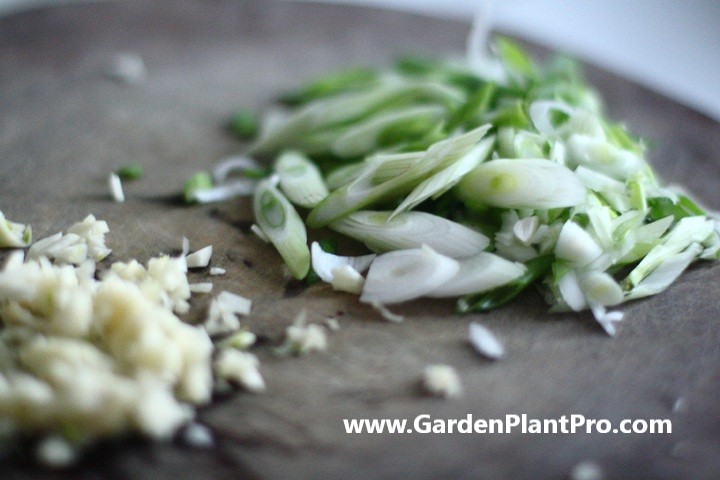
Using Your Green Onions
Once you have harvested your green onions, you can use them right away or store them for future use. If you plan to store the onions, be sure to dry them thoroughly. Place them in a cool, dry place and cover them with a breathable material such as a cloth. The onions should last for up to two weeks.
If you plan to use your green onions right away, there are numerous ways to incorporate them into recipes. Green onions are often used for flavor in soups and stir-fries, and they can also be added to salads and sandwiches. Alternatively, they can be used as a garnish for main course dishes or even desserts.
When using green onions in recipes, it’s important to note that the bulb has a mild onion flavor while the leaves are spicier. If you want the milder flavor of the bulb, it’s best to sauté or roast it before adding it to the recipe. For an extra kick of flavor, add the scallion leaves at the end of cooking.
Green onions are also great for pickling and fermenting. Simply add roughly chopped scallions to a jar of vinegar or brine and let sit for several days before straining off the liquid and storing in the refrigerator. Pickled scallions will last up to two months when stored properly.
Finally, green onions can also be frozen for later use. To freeze your green onions, chop them into small pieces before placing them in an airtight container or bag and freezing for up to six months. When ready to use, simply thaw overnight in the refrigerator before adding to your recipe of choice.


